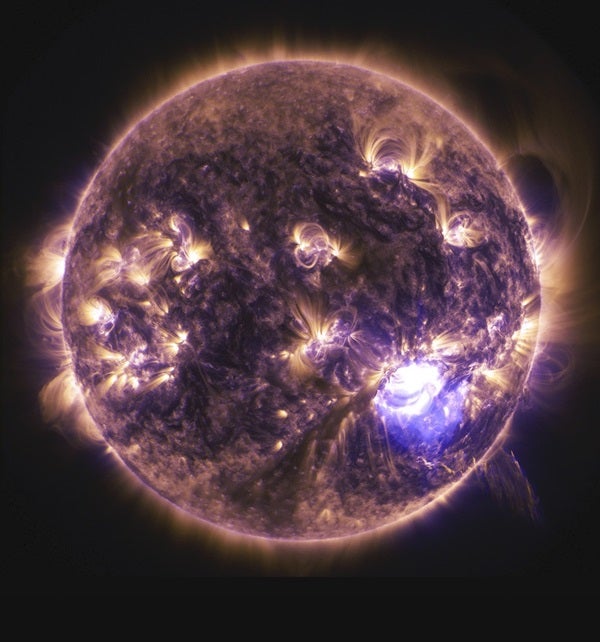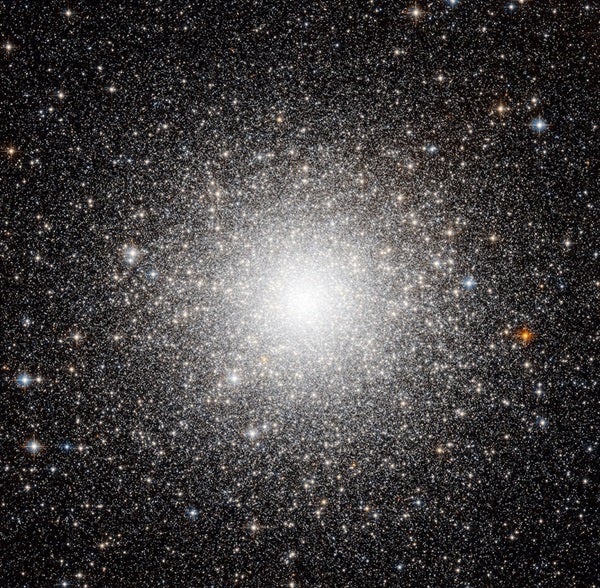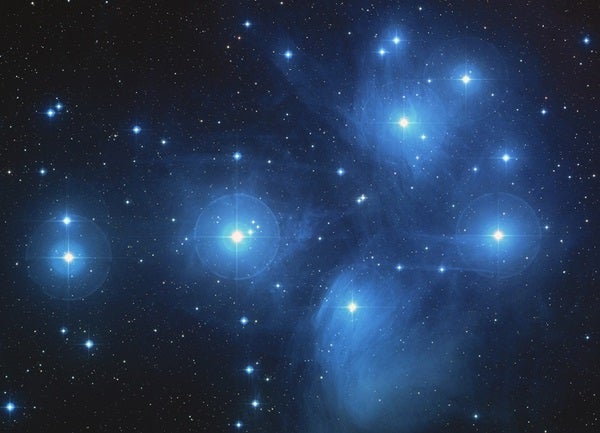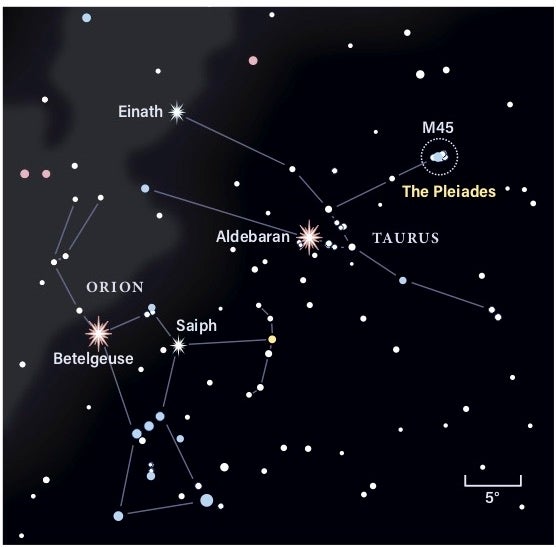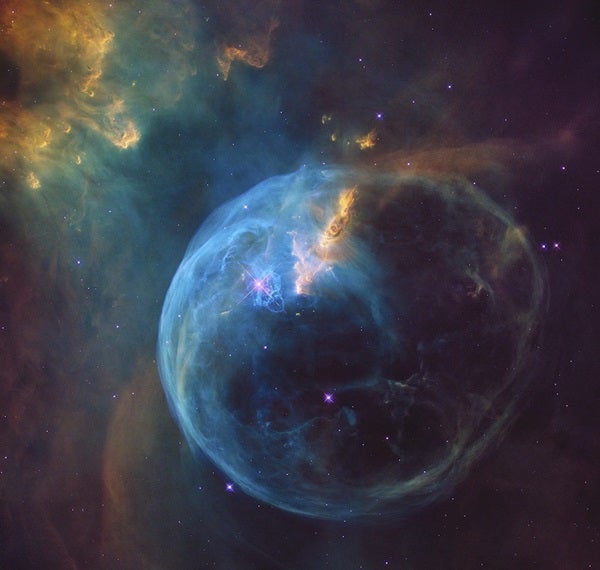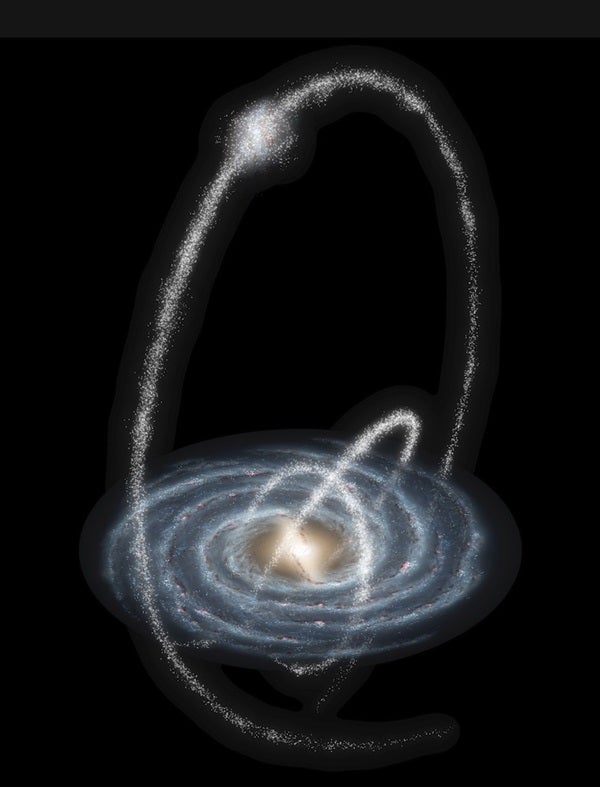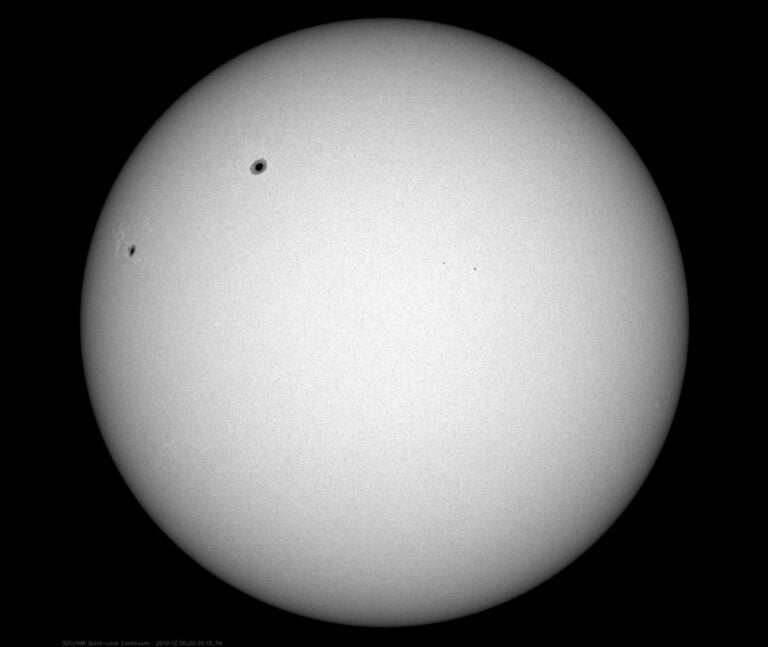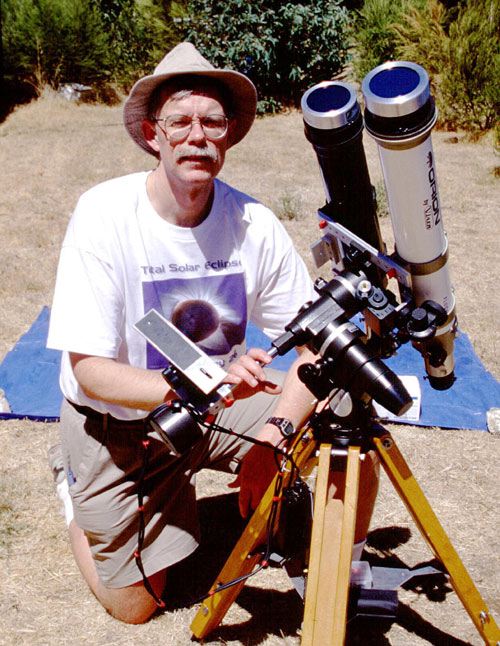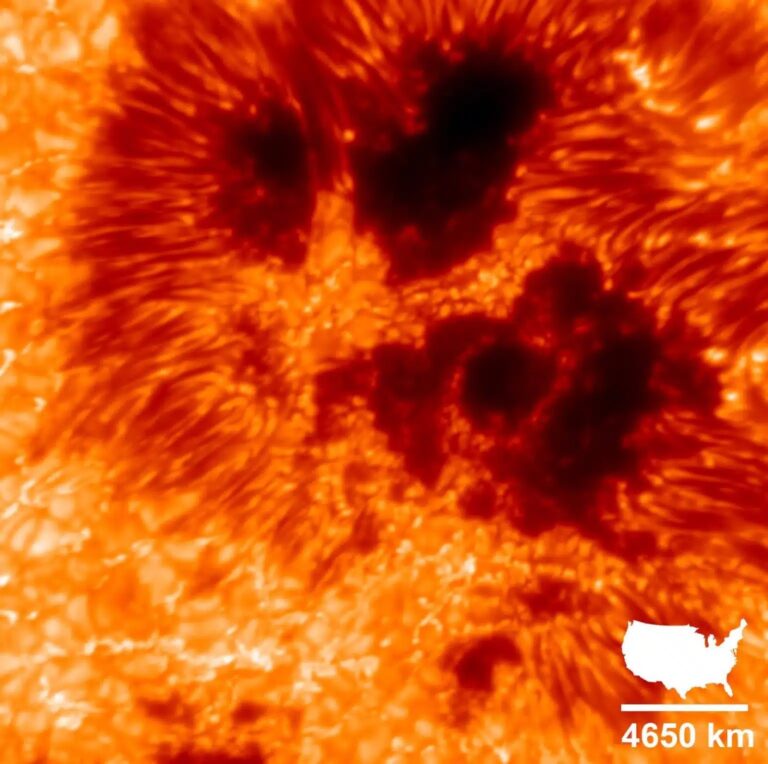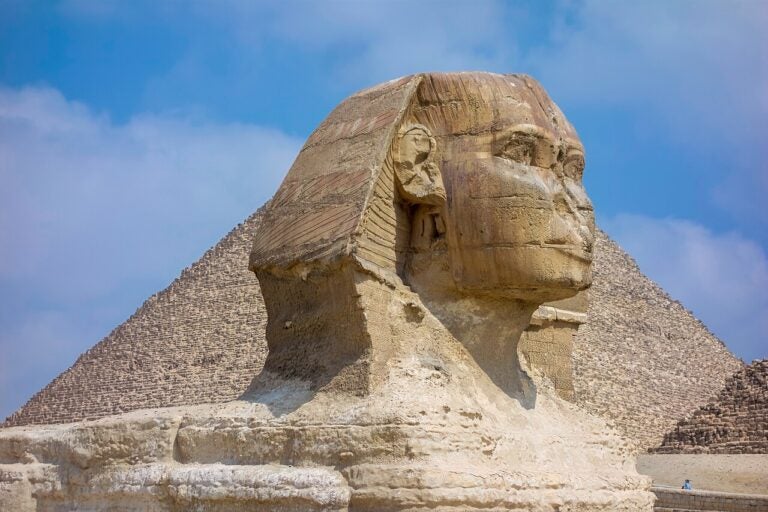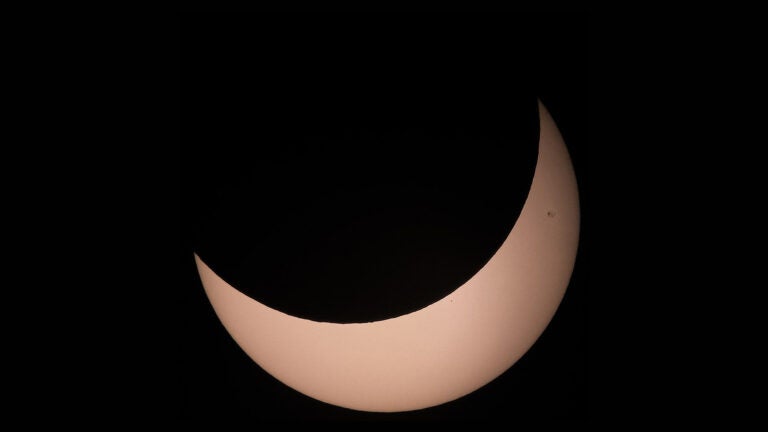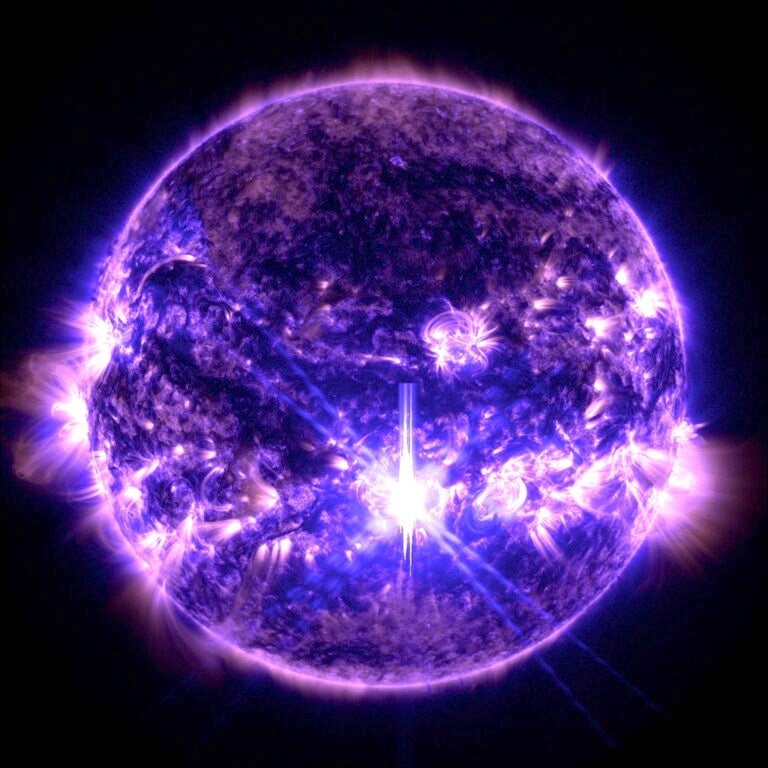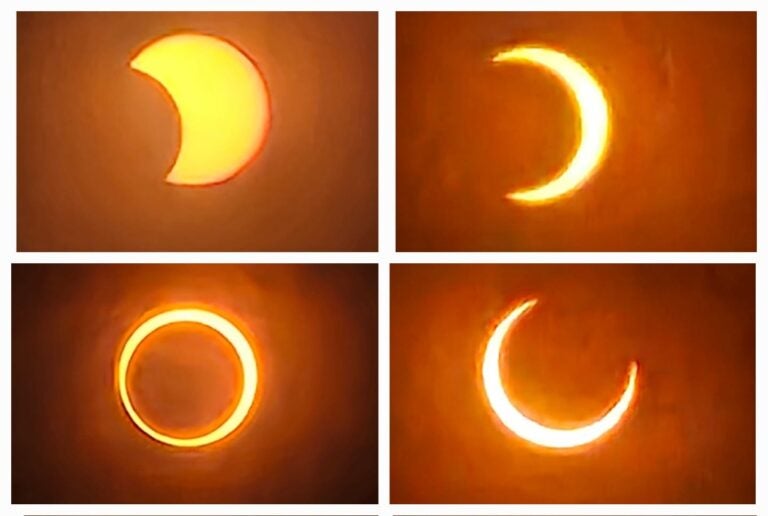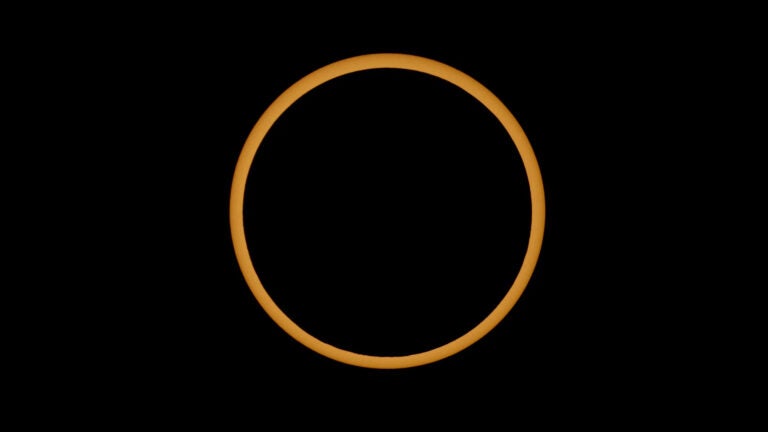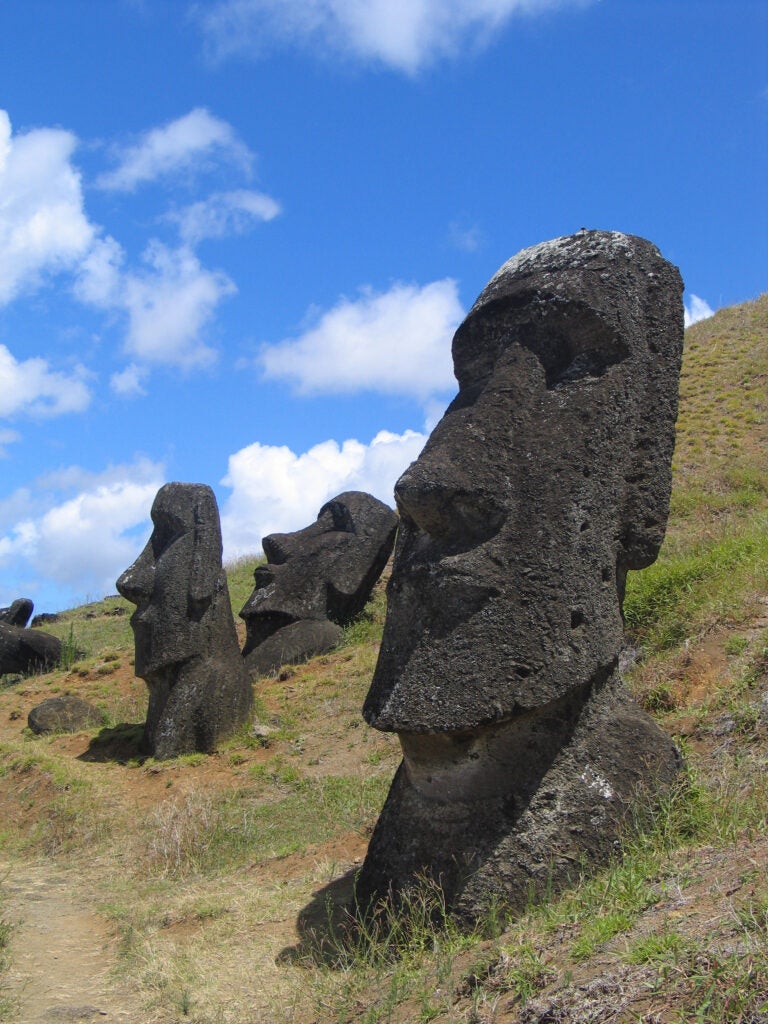This story comes from our special January 2021 issue, “The Beginning and the End of the Universe.” Click here to purchase the full issue.
Some 4.6 billion years ago, our Sun was born from a cloud of interstellar gas and dust.
It came from a giant molecular cloud — a collection of gas up to 600 light-years in diameter with the mass of 10 million Suns — which had been circling the Milky Way for who knows how many years. The pull of gravity caused some of this cloud to collapse, until it heated up enough to emit light.
That much astronomers know. But what caused this gas cloud to collapse in the first place remains the subject of vigorous debate.
Light in the darkness
Scientists have a firm grasp on the physics of how the Sun was born. Those atoms that formed the Sun in the giant molecular cloud — mostly hydrogen and helium — were moving slowly enough that they could collide and conglomerate into clumps of matter. They then linked up with other atoms, and eventually trillions of atoms joined in. After about 10 million years, the vast majority of these concentrated patches grouped together at the cloud’s center.
As the central mass grew, so too did the strength of gravity compacting it. This raised the pressure inside and heated it, causing it to emit infrared radiation. This clump of mainly hydrogen and helium was now a protostar — a phase that, for stars like the Sun, lasts about half a million years. The protostar continued to accrete mass as material from the cloud — which by this time had formed a disk around the central object — rained onto its surface.
As the emerging Sun packed on mass, the temperature and pressure of the protostar increased. Eventually, at a sweltering 9 million degrees Fahrenheit (5 million degrees Celsius), nuclear fusion kicked on in the protostar’s core. Once this happens, most stars quickly establish a balance between the inward pull of gravity and the outward push of radiation, and the star’s mass determines its final core temperature. For the Sun, that’s around 27 million F, or 15 million C. At this time, the Sun truly began to shine.
Once a cluster’s stars are formed, gravitational interactions among its members usually fling some of those stars into space. Forty percent of the time, these ejected members are flying solo. The majority, however, head off as double or multiple stars. In this respect, the Sun is a bit of an oddball. (Read more about the search for stars that formed in the same nebula as the Sun in “The Sun’s lost siblings,” in the July 2020 issue of Astronomy.)
Triggering collapse
Many astronomers think the giant molecular cloud from which the Sun formed drifted through space for perhaps billions of years, only beginning to collapse when the shock wave from a relatively nearby supernova reached it. The interaction would have been gentle, though, because the exploding star was probably light-years away, and the shock wave would have dissipated as it moved through the intervening gas between the stars. But it still would have been enough to perturb the nebula — moving atoms around within it and creating regions where the density was high enough to collapse in on itself.
But astronomers have also proposed other possibilities.
A group of researchers led by Tomás Ruiz-Lara at the Astrophysics Institute of the Canary Islands in Spain contends that the Sagittarius Dwarf Elliptical Galaxy (Sag DEG) may have provided the initial gravitational push our solar system needed to begin its life. Currently located some 70,000 light-years away and measuring about 10,000 light-years in diameter, Sag DEG is one of the Milky Way’s multiple satellite galaxies, and it moves in a polar orbit around our galaxy.
The most interesting near pass was the one 5.7 billion years ago, just over a billion years before the birth of the Sun. Could it have been the trigger for our star’s formation? Although we don’t know for sure, says Ruiz-Lara, the timing works out.
Born from a bubble?
In 2017, Vikram V. Dwarkadas, an astronomer at the University of Chicago, and his colleagues published a paper that showed the solar system might have formed thanks to the stellar wind of a massive type of star called a Wolf-Rayet (WR) star.
Their evidence comes not from looking into the depths of space, but from examining meteorites that have landed on Earth. These meteorites were forged in the early solar system, and the abundances of their various isotopes — atoms of the same element with a common number of protons but a different number of neutrons — reflect the chemical composition of the material in the cloud that collapsed to form the Sun.
When the team compared the ratio of Aluminum-26 (Al‑26) to Al‑27 in meteorites, they found it to be some 17 times higher than the observed ratio for the Milky Way as a whole. This means that the aluminum didn’t evolve slowly with the rest of our galaxy, but rather was injected into the nebula that formed the Sun.
The first obvious source for this extra aluminum would be supernovae, which produce heavy elements — including Al‑26 — and spew them throughout the cosmos. However, further study revealed that the ratio of Iron‑60 (Fe‑60) to Fe‑56 — both also released during supernovae — was 50 million times lower than the ratio found in the galaxy.
This led Dwarkadas and his colleagues to shift their suspicions to WR stars, which have stellar winds that release lots of Al‑26 but no Fe‑60. These are O-type stars that are near the end of their life and have ceased normal hydrogen fusion. With masses more than 25 times that of the Sun, their surface temperatures can top 54,000 F (30,000 C). At these temperatures, the pressure exerted by the star’s photons is so powerful it can produce stellar winds with speeds up to 4.5 million mph (7.2 million km/h).
Dwarkadas and his colleagues believe one massive star could have provided enough Al‑26 to account for the amount that researchers find in meteorites in our solar system. Of course, this wouldn’t distribute Al‑26 in just our solar system. Any of the concentrations of material in the original giant molecular cloud would form additional stellar systems, and each would be enriched in this isotope.
Spectroscopic studies have found corroborating evidence: Al‑26 in star-forming regions throughout the Milky Way, including some in the constellations Vela, Cygnus, Orion, Scorpius, and Centaurus. And in a 2012 study of star-forming regions in Carina, astronomers found that supernovae alone couldn’t account for the amount of Al‑26 they detected. This points to the conclusion that the area was enriched by one or more WR stars — and perhaps triggered our Sun’s formation in the process.
Astronomers already have a firm grasp on when and how the Sun formed and the process by which it shines. And perhaps soon, they’ll decide which theory best explains the reason it started forming in the first place.

